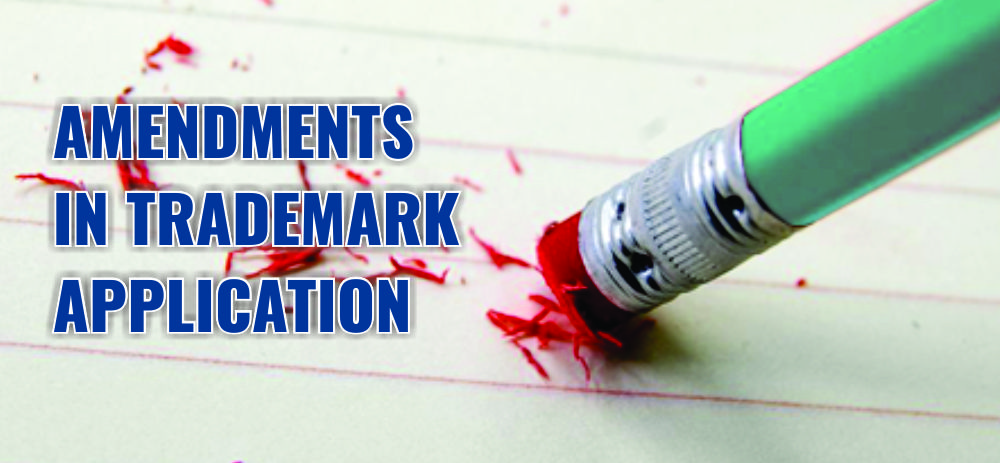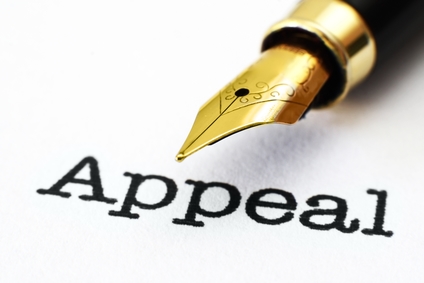Correction and amendment in Trademark Registration Process
Correction and amendment – Trademark Registration in Coimbatore:
The registrar may think at any time with such terms, whether before or after the acceptance of an application for the registration as per the section 18, which permits the correction of any error in or having a connection with the application or permit the amendment of an application:
Provided that if an amendment is made to a single application referred to in sub-section(2) of section 18 involving the decision of such application into two or more applications, the date of the making of the initial application shall be deemed to be the date of the making of the divided applications so divided.
Trademarks act, 1999:
Note on clauses: This clause which corresponds to section 22 of the existing act, provides for correction of any error in or in connection with the application or amendment of the application either before or after acceptance of the application.
What correction or amendment is allowable?

The correction or amendment envisaged under this section may be made at any time after an application is filed and before the registration of the mark. Nevertheless, it is advisable for an applicant to make such correction or amendment, wherever necessary, before the application is accepted and advertised in the trademarks journal, to obviate readvertisement of the mark, entailing a delay in eventual registration of the mark.
The difference between correction and amendment is obvious. The section does not say what corrections or amendments are allowable. It does not say or lay down precisely the nature of correction admissible, as under the U.K act, 1994. Under the U.K. act of 1994, an amendment of the application is restricted to the following:
- Correction in the name or address of the applicant;
- Errors of wording or of copying or
- Obvious mistakes.
The corrections should be such as do not substantially affect the identity of the trademark or extend the goods or services covered by the application. Obviously, the amendment of marks, when sought to be made, can only involve minor changes.
The practice of Indian registry:
The Indian registry practice is also more or less on the same lines as in UK., in so far as allowing correction of any error in or in connection with the application. The correction may be of obvious mistakes, errors, and mistakes in typing including in the names or address of the applicant. The statute in India is not so rigid (as in U.K. in this respect under the latest U.K. Act of 1994), but continues to be what it was under the 1958 act and therefore the same old practice would continue, even in respect of amendment.
The expression amendment would imply something more than correction. For example, if the applicant wants to replace a label mark with a mark limited to the distinctive element consisting of a word per se, the registry does not find it objectionable and allows such an amendment, requiring the applicant to submit a fresh representation, confining the mark to the word per se. Where a label is in color and is sought to be registered without limitation to colors, and is required or proposed to be amended by deleting some non-distinctive matter, the applicant is permitted to substitute a label of black and white, with the required number of representations. If a label contains letter R in a circle, or the word REGD/REGISTERED, the registrar requires the deletion of such sign and submit fresh representations without such sign or expression. The applicant may either choose to file black and white fresh representations for substitution, where the original label was in color; or submit fresh colored representations by suitably deleting the matter.
Amendment of the representation by over-passing has been allowed by the registrar in exceptional cases, for instance, in order to show the colors without expense the applicant for new color prints, provided that the over-passing is sufficiently well done to be likely to remain permanent. Small and trivial alterations or corrections have also been permitted to be carried out in ink on the matter to be deleted. It has been held that on the question whether an amendment of the mark would substantially affect the identity of the mark, it is a matter of discretion for the registrar to decide.
Amendment involving a change of class:
In Altechnic Ltd’s trademark application, the applicants requested that the classification of goods be changed from class 7 to class 11. The request was allowed by the trademarks registry and the application was advertised in respect of valves; valves for use in water circulation; blending valves in class 11. It was contended by the opponents that the change to the classification was ultra vires. The hearing officer held that the amendment to the classification was ultra vires. The applicants appealed to the high court which allowed the appeal and held that the change of class was a permissible exercise under the registrar’s powers. On further appeal, the court of appeal held that the registrar’s decision to permit amendment to be ultra vires and remitted the application back to the registry. In this connection, the hearing officer held:
While holding that the registrar had the power to amend the classification, the high court made the following key points:
- The classification was primarily a matter of administrative convenience, the classes representing “convenient, but loosely defined, pigeon holes into which application can be put”.
- There is a distinction between the classification of a mark and the specification of goods to which it is to be applied.
- Section 32 does not impose on the applicant any obligation to define the class into which his registration will fail.
- Classification is determined under section 34 of the 1994 act by the decision of the registrar in the exercise of his discretion, which cannot be challenged on appeal and is only subject to judicial review if it is irrational.
- The distinction between the specification of goods on an application for registration and the classification of marks under section 34 directly affects the issue of amendment under section 39.
While allowing a further appeal, the court of appeal held as follows:

The registrar is entitled to treat the class number in the application as relevant to the interpretation of the scope of the application, for example, in the case of an ambiguity in the list of the specification of goods. The application is a considered statement of the applicant which, on ordinary principles of the construction of documents, has to be read as a whole to determine its meaning and effect. The fact that the internationally agreed nice classification system has been devised to “serve exclusively administrative purposes” does not mean that the selection by the applicant of one or more class number in his application for registration has to be totally ignored in deciding, as a matter of the construction of the applications, what the application is for and whether it can properly be amended.
Registrar’s jurisdiction after a mark is opposed:
If an applicant wants to amend his mark in the light of an opposition, it is no longer a matter between the registrar and the applicant alone. Indeed, the question is not only between the rights of the two parties before him, but also the interest of other traders who may like to oppose the proposed amended version of the label. It has been held that once an opposition is entered, the registrar has no jurisdiction to decide that the registration shall be allowed, upon a modification of the mark.
Notification or re-advertisement:
Sub-section(2) of section 20 gives discretionary power to registrar either to notify or re-advertise the correction or amendment in the application where an error in the application has been corrected or the application has been permitted to be amended under section 22, after the advertisement.
Any amendment which affects the representation of the trademark or the goods/services covered by the application would, in general, be re-advertised, as such amendments are likely to affect third parties, on the other hand, correction of obvious mistakes or errors, after advertisement will be merely notified.
Where there is re-advertisement of an application, the provision of section 21 will apply. In the case of notification of corrections, however, section 21 has no application.
Division of application:
Section 22 provides that if an amendment has been made to a single application that is referred in sub-section (2) of section 18 that involves division of such application into two or more applications.
Section 18(2) enables a single application to be made for registration of a trademark for different classes of goods and services. When a single application is made for registration of a mark in several classes and if the registrar raises objection in respect of the mark in respect of one or more classes, the applicant may seek to divide the application so as to enable the mark to proceed further for advertisement in respect of the classes which are free from objections. A similar situation may arise after the mark is advertised and when an opposition is filed. The opponent may have an objection to registration of the mark in respect of goods/services falling in one or more classes, while he has no interest in respect of others in the same application. The division of application thus becomes possible-
- As a result of examination by the registrar and before the advertisement; or
- During any opposition proceedings; or
- It is during any appeal proceedings which are against the decision on the registration of the mark.
The provision which is primarily intended to facilitate the processing of an application and not to tie it down along with other goods/services, in respect of which objections have been raised, will be administered by the registrar to the advantage of the applicant. In such cases, where on request of the applicant, the application is divided, the divided application shall preserve the same filing date as of the original or initial application terms of priority right. The proviso to section 22 makes explicit provision in this regard.
Procedure for division:
Rule 108 makes provision for division of applications. A request in this behalf may be made on Form TM-M for a division of single pending application, so that it may be divided into two or more separable applications on payment of a divisional fee and such class fees as are appropriate in accordance with the division. Such application may be made at any time before registration. The registrar will treat each division application as a separate application for registration, with the same filing date as the initial application.
In the case of a request to divide some goods or services, but not all in a class, a divisional fee for a separate application to be created by the division shall be paid. The time limits for any action by the applicant has applied to the initial application will apply to the divided application also, irrespective of the date of division.
Where a request for a division is not accompanied by necessary fee or fee is insufficient, the applicant should correct the deficiency within 30 days of notice to that effect from the registrar, otherwise, the request will be treated as abandoned.
Under sub-rule 4 in the case of divisional application, the registrar shall assign an additional separate new serial number or numbers as the case may be and it shall be cross-referenced with the initial application. It is also explicitly clarified that no new registration shall be effected when a single application is divided. On the contrary, the application already filed shall be merely separated or divided into individual files.